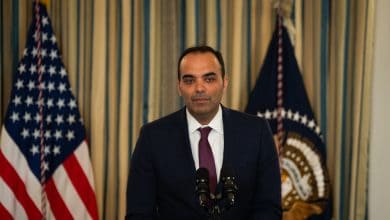The Daughter Who Got the Government to Cancel Her Mother’s Debt

“I am going to get my mother’s loans forgiven,” read the email that landed in my inbox 10 months ago. “So if by May, 2023, when I turn 28, you need a success story, feel free to reach out.”
In the many years I’ve been chronicling the sorry state of the federal Public Service Loan Forgiveness program, I’ve heard from plenty of student loan debtors in their 20s who couldn’t hack their way through the thicket of complex rules and red tape. Desperate parents write in, too, having taken over the often part-time job of navigating the system for their soldier or public defender or schoolteacher kids working 60- to 80-hours per week.
But that email from Arianna Miskin was a first: She was trying to help her mother, Susan Miskin, a retired New York City public-school teacher, get her $92,000 balance canceled. That debt was older than her daughter.
What had given her hope was a temporary waiver that the Biden administration had put into place, which altered a number of rules that had stymied her mother.
I admired Arianna’s brashness. I was moved by her quest. And I was not at all sure that she would be able to pull it off.
So here’s what happened.
Susan Miskin first started borrowing in the late 1980s to attend community college and take classes at two colleges in the City University of New York system to get her bachelor’s degree. To boost her earning potential further, she received her master’s degree from Adelphi, a private university that allowed her to attend school for nine hours each Saturday, when she wasn’t working.
Arianna arrived in the middle of all of that, and by the time she was born, Susan and Arianna’s father had split up. The student loan debt — just over $30,000 in initial borrowing — paid for a Saturday babysitter in addition to tuition.
For a while, the mother-daughter pair navigated the following routine: Up at 5 a.m. in Staten Island, out the door by 6, school drop-off for Arianna in Brooklyn at 7. (“Thank you, Mrs. LaCerra, for letting her come in early and sit in the main office and read a book before breakfast,” Susan said.) Then, by 8, Susan arrived at the school where she worked as a speech-language therapist.
After that, Susan went to her second job working with autistic toddlers, while her daughter was in after-school care. Pickup was at 7, sometimes earlier, and then came the slog of traffic back over the Verrazzano-Narrows Bridge to their home, a modest townhouse in the Huguenot neighborhood that Susan had purchased in 2004.
The debt repayment process had kicked in while she was raising Arianna, as did the confusion that so many borrowers have faced over the years. There are different types of loans and various interest rates for each of them. There are a bunch of ways you can repay them, a variety of ways to consolidate them and several ways to have the loans canceled. The cancellation programs have varying eligibility rules, and it’s not always clear if you’re meeting them. Owing to all of the complexity, people on the phone at the loan servicers have often given out incorrect or incomplete information.
In the midst of all of this, Susan made some choices that came back to haunt her. An employee at one of the four entities that had serviced her loans suggested consolidating her debt so she could make just one payment each month. This can be good advice for many people, depending on the circumstances. But postpartum and sleep-deprived, she said yes without asking enough questions. Her interest rate spiked as a result.
Then, in the first dozen years of Arianna’s life — when expenses were high and Susan’s income hadn’t yet risen into a more comfortable range — she frequently put her loans into forbearance when expenses overwhelmed her. During those 86 months, interest compounded and the balance grew even when she did start paying again. By last year, it had climbed to over $90,000, even though she’d made more than $30,000 in payments.
“I was the clichéd single mom,” Susan said. “You’re damned if you do and damned if you don’t.”
It is so easy to question other people’s choices when you haven’t faced a similar series of suboptimal circumstances yourself. But in case you’re wondering, Susan took on mortgage and tax payments to stabilize her housing costs and steer clear of unpredictable rents and New York City landlords.
She stayed in New York City — after moving to its less expensive outermost reaches — because that’s where her family was, because she was accruing benefits in a pension there and because Arianna eventually won entrance to a competitive public high school for excellent students.
Child support? She said that she was nearly fired early in her career for spending too many days in court trying to obtain more than the tiny amount she did collect — and paid a fair amount in legal fees for her efforts.
Debtors should repay the debts that they willingly take on under most circumstances. But it was voters who put President George W. Bush in office to sign the bill in 2007 that brought the P.S.L.F. program to life. Similar loan cancellation programs are also common at the state level, red, blue or purple. Encouraging people to go into teaching or other work serving the needy or the nation is mainstream common sense public policy.
Susan, however, wasn’t eligible. She had the wrong type of loan and was in the wrong repayment plan, among other problems. P.S.L.F. has very particular rules.
Then, Arianna swooped in. She was, Susan told me, the kind of kid who walked and talked at 10 months old, potty trained herself and hugged the bullies when they started to cry.
Those waivers that the Biden administration put into place last year seemed as if they could erase every confounding problem that Susan had. They could give people credit if they had paid late and if they were in the wrong type of loan. And, especially helpful for Susan, they could count time in forbearance toward the 120 payments required for loan cancellation.
Arianna went to work. She spent hours on hold with the four servicers who had managed Susan’s loans. Often, they’d refer Arianna back and forth in dizzying circles when she tried to track down payment records from 10 or more years ago. Gatekeepers wanted her to use fax numbers to send proof of eligibility. The fax numbers didn’t work.
Finally, Arianna handed everything off to one final servicer and waited. Months later, while she was on the phone with her boss in Los Angeles, where she lives now, a text came from her mom. It was a photo of the payoff letter. The plan Arianna put into place had worked.
Arianna burst into tears. Susan, who had grabbed the mail while heading out the door, held the letter aloft and whooped for joy in the diner parking lot where she was stuck with a flat tire. People stared. She did not care.
“I’m just so proud that she wouldn’t let me give up,” Susan said.
Arianna, who has a master’s in public health, has over $100,000 in student loan debt, even though Susan juggled loans from two different retirement plans of her own while trying to help with Arianna’s tuition. “You can’t get a good job if you don’t go to school, supposedly,” Susan said. “But you can’t get a degree because you can’t afford it. So it’s a vicious cycle.”
Because Arianna works at a health-related nonprofit, however, she is close to a quarter of the way toward having her own loans canceled via P.S.L.F. Now that Arianna is practically a certified expert, she feels reasonably comfortable with the debt.
But her mother’s — after a lifetime of sacrifice and a career helping people who had it harder than they did — had never sat well. “I’ll never pay her back for all she’s done for me,” Arianna said. “She always tells me that that is not the point of parenthood, but I always wanted to do it somehow.”
Now, she has. It’s a pretty great gift — to herself for her birthday and to Susan for Mother’s Day. Arianna received a gift back, too. Her mother had lent her $6,000 for cross-country moving expenses and the deposit she needed on a rental apartment.
“I told her to keep it,” Susan said. “You saved me $92,000, so this one is on mom.”




